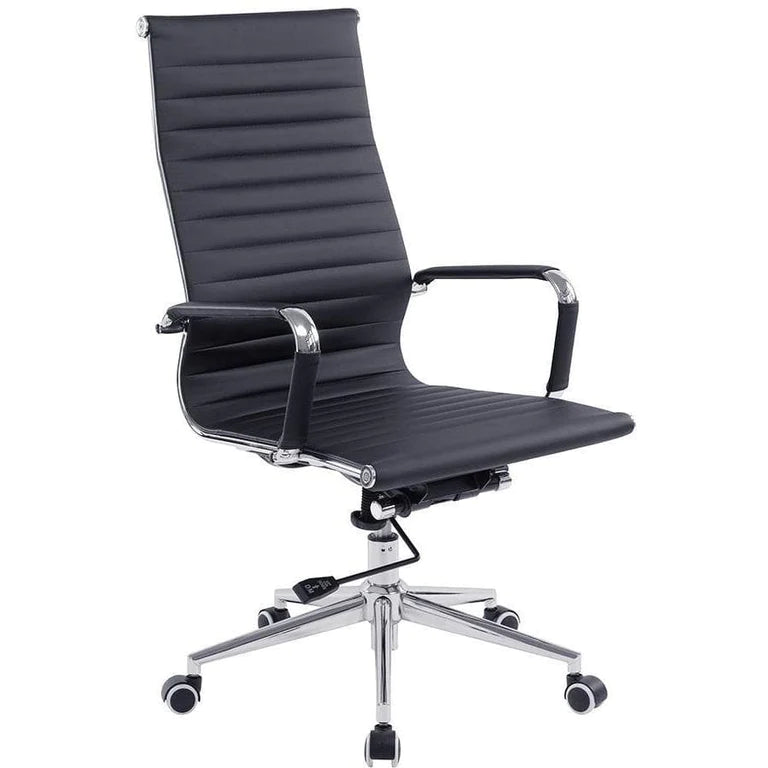
Ergonomics 101: Designing a Pain-Free Workspace

In today's fast-paced work environment, spending long hours at the office is a common scenario for many professionals. However, this prolonged period of sitting and working often leads to physical discomfort and health issues. To combat this, understanding and implementing ergonomic principles in the office workspace is crucial. This article explores how to create a pain-free workspace, focusing on ergonomics.

Understanding Ergonomics: A Deeper Dive
Ergonomics, at its core, is about creating a work environment that aligns with the human body's natural posture and movements. It's a multidisciplinary field that draws from anatomy, physiology, psychology, and engineering. The primary aim is to design workspaces that minimize the risk of injury and enhance productivity by reducing worker discomfort and fatigue.
The Human-Centered Approach
Ergonomics focuses on designing workspaces that adapt to the needs of the human body, rather than forcing the body to adapt to the workspace. This human-centered approach takes into consideration various factors:
Body Mechanics: Understanding how the body moves and works is crucial. This includes knowledge about the spine's natural curvature, joint movements, and muscle functions.

Anthropometrics: This refers to the study of human body measurements. Ergonomic designs use this data to create furniture and tools that fit a wide range of body sizes and shapes.
Cognitive Ergonomics: This aspect deals with mental processes such as perception, memory, reasoning, and motor response as they affect interactions among humans and other elements of a system. For example, arranging tools and materials in an office in a way that reduces mental strain and enhances productivity.
Risk Factors in Non-Ergonomic Designs
Non-ergonomic environments can lead to a variety of health issues:
- Repetitive Strain Injuries (RSIs): These occur due to repetitive motions, such as typing or using a mouse.
- Posture-Related Problems: Poorly designed workspaces can lead to chronic back, neck, and shoulder pain.
- Vision Strain: Incorrect monitor placement and poor lighting can cause eye strain and headaches.

Implementing Ergonomics in the Workspace
To incorporate ergonomics effectively, it's essential to assess the current workspace and identify areas for improvement. This might involve:
Conducting ergonomic risk assessments to identify potential hazards.
Providing training for employees on the principles of ergonomics.
Regularly reviewing and updating the workspace design based on employee feedback and new ergonomic research.
Key Components of an Ergonomic Office
-
Ergonomic Chairs: An ergonomic chair supports the lower back, promotes good posture, and is adjustable to suit individual needs. Features like adjustable armrests, lumbar support, and a swivel base are essential.
-
Desk Height and Layout: The height of the desk should allow for the forearms to be parallel to the ground while typing. A clutter-free desk with enough space for movement is ideal. Consider a sit-stand desk for flexibility.
-
Monitor Placement: The top of the computer screen should be at or slightly below eye level. The screen should be about an arm's length away to prevent eye strain.
-
Keyboard and Mouse Placement: These should be placed in a way that keeps the wrists straight and the hands at or slightly below elbow level.
-
Lighting: Good lighting is essential to prevent eye strain. Natural light is preferable, but if not available, ensure adequate, well-distributed artificial lighting.

Additional Ergonomic Tips
- Take regular breaks to stretch and walk around.
- Ensure that the screen is free from glare.
- Use footrests if your feet don’t comfortably reach the floor.
- Consider ergonomic accessories like wrist rests and document holders.

Ergonomics and Remote Work
With the rise of remote work, these ergonomic principles are not just limited to traditional office spaces but are also crucial for home offices. Creating an ergonomic workspace at home involves the same principles, ensuring comfort and productivity.
Summary
Implementing ergonomic principles in the office workspace is not just about comfort; it’s a necessity for the health and well-being of employees. A well-designed ergonomic workspace can lead to fewer injuries, greater comfort, and increased productivity. As we continue to evolve in our work habits and environments, ergonomics remains a critical component in designing a workspace that is both efficient and pain-free.









